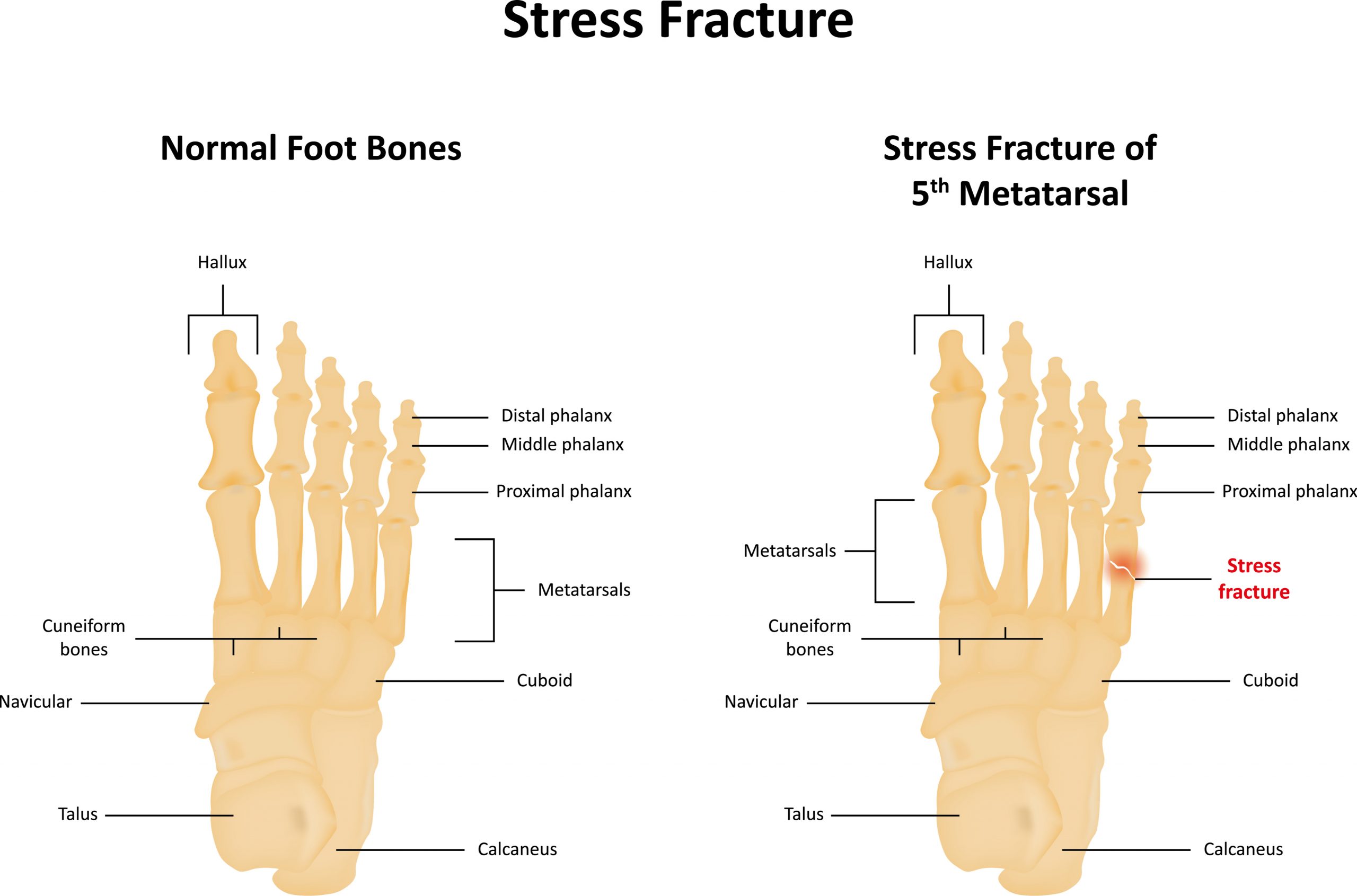Stress Fractures
Stress factors can be small breaks or cracks in bones that can develop over time and are often referred to as overuse injuries. They can occur in high impact activities such as athletics, gymnastics and dancing and also can develop when a bone is weakened by a condition such as osteoporosis. Stress fractures can be painful and are often alleviated with rest.
Rachel Miller is a highly experienced podiatrist who treats many people with stress fractures. Please see below if you want more detailed explanation of stress fractures, its symptoms, causes and treatment.
Call 020 8348 5553 to make an appointment
Stress Fractures
Symptoms of stress fractures
Symptoms can include:
- pain during or after activity, relieved by rest
- pain where the break is located
- a deeper pain within the foot
- a “Pinpoint pain” at the site of the fracture
- swelling on top of the foot or in the ankle
If a stress fracture is not treated the pain can be severe.
Causes of stress fractures
The 1st, 2nd and 5th metatarsal are the most commonly injured in sport and are often caused by a repetitive use of force. Stress fractures are most common in track and field athletes and those who have changed their training regime increasing their mileage or intensity.
An abnormality of the foot, such as rheumatoid arthritis or osteoporosis, can increase the probability of a stress fracture. Your foot structure can be a predisposing factor to your susceptibility to injury. You may overpronate, where your foot rolls in during gait, or you may supinate, where your foot rolls out during gait, both of which can put excess forces and stress the foot and ankle that may lead to injury. The wrong footwear for your type of foot can increase your susceptibility.
Athletes with high arches should pay extra attention to their lower limbs as pes cavus is not the most efficient foot structure for absorbing shock, and feet with a raised midfoot may be more prone to injuries.
Other risk factors for stress fractures include:
- Gender differences, as stress fractures are seen more often in female patients.
- High-impact activities, such as running, tennis, gymnastics and football.
- Diet, a lack of vitamin D and calcium can make bones more likely to develop stress fractures.
- Previous stress fractures puts you at higher risk of having more.
Treatment of stress fractures
It is important to diagnose the underlying causes of a stress fracture to implement an effective treatment plan. Treatment will also depend on the nature and severity of your condition, your overall health and medical history.
Treatment may include:
PRICE – Protection; Rest; Ice; Compression; Elevation.
Other treatments may include:
- a modification of your exercise regime
- exercises
- muscle and joint stretches
- taping
- medication
- footwear advice
- the use of an orthotic insole
An orthotic insole may help correct a biomechanical imbalance that might be a contributing factor causing stress fractures and may help cushion, stabalise and support your foot aiding recovery.
Contact the Centre for an appointment on 020 8348 5553
Rachel Miller is a highly experienced podiatrist specialising in biomechanics and orthotic insoles who sees many patients with stress fractures. Her clinic, Highgate Podiatry, is in Highgate Village, 14 Pond Square, N6 6BA, London. Clinics are held every Sunday, Wednesday and Thursday. Please contact the clinic for an appointment on 020 8348 5553. For the clinic’s address, map and directions see the Contact page and for information about orthotic insoles and biomechanics see the Biomechanics page.
Links to Services:
Link to Conditions Treated Include:
- Achilles tendinopathy
- Ankle fractures
- Ankle injuries
- Arthritis
- Back pain
- Bunions
- Corns/Calluses
- Diabetic care
- Flat feet
- Fungal toenail/athlete’s foot
- Haglund’s deformity
- Hammer toe and mallet toe
- Heel pain
- High arches
- Hypermobility
- Ingrown toenail
- In-toeing, toe walking, curly toes
- Knee injuries
- Metatarsalgia
- Morton’s neuroma
- Osgood-Schlatter disease
- Overuse injuries
- Patella tendinopathy
- Patellofemoral pain syndrome
- Plantar fasciitis
- Sever’s disease
- Sprained ankles
- Stress fractures
- Tarsal tunnel syndrome
- Toenails






